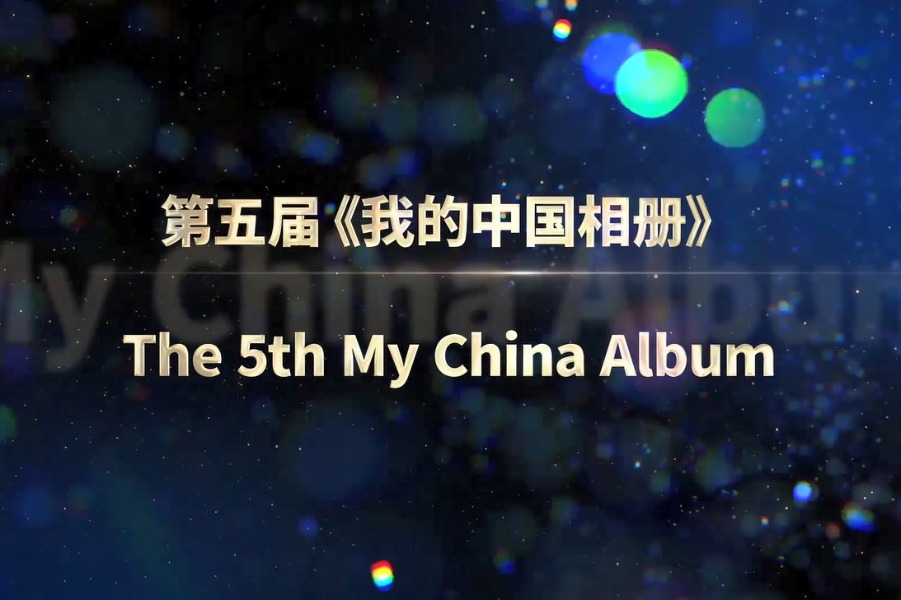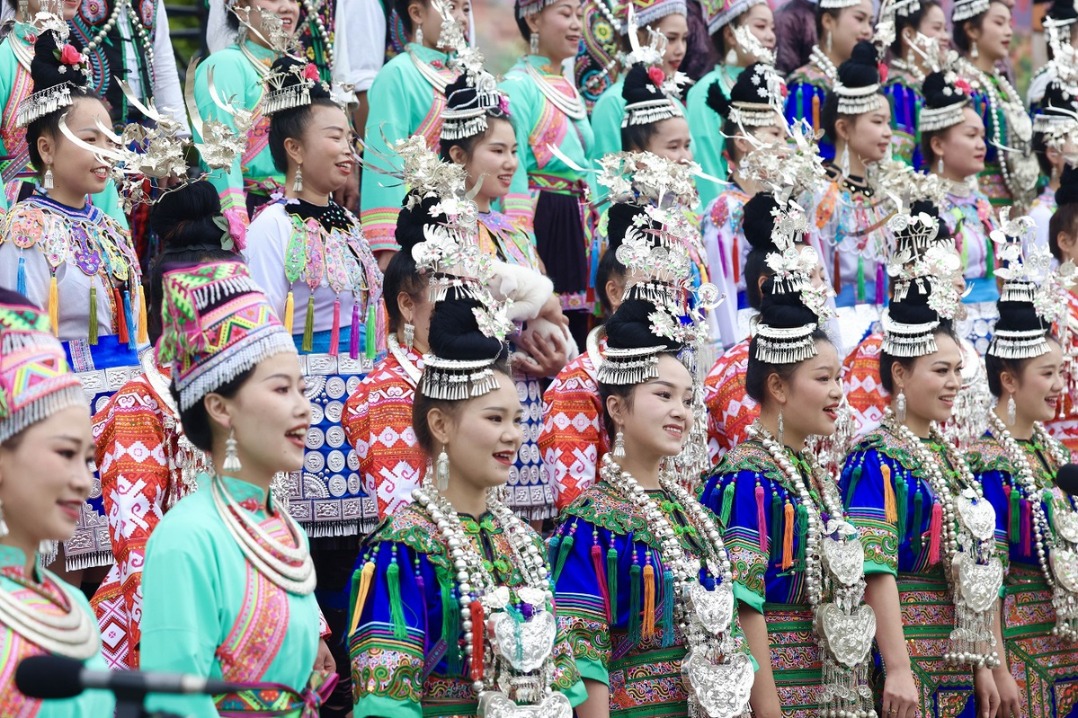Exhibits promote understanding, admiration
By Wang Linyan in London | China Daily Global | Updated: 2023-10-25 01:17

Gu's unique style
Gu Kaizhi is known for long and rounded brushwork that has been described as being like silk threads. Luk says the style can be clearly seen in the way he depicts figures and costumes.
Through the portrayal of clothes, Gu promotes the idea of transmitting spirit through form, which was important in his work.
"The way he depicts eyes is also special and when you look at his scenes, there is a kind of interaction. The way his figures look at each other also creates an atmosphere," Luk says.
"There's a certain psychological complexity that shows someone who observes human nature."
Luk chose two paintings by Fu Baoshi (1904–65) to be displayed next to the scroll last year — Scholars Suffering from Hardship and Mount Jin'gang. Both were painted during the War of Resistance Against Japanese Aggression (1931-45).
Fu Baoshi was an important 20th century Chinese painter and art historian who studied Chinese painting history and was very interested in Gu Kaizhi.
Fu's paintings, as Luk puts it, show the influence of Gu Kaizhi in the forms of the figures and in his emphasis on transmitting the spirit, but Fu clearly has his own style.
"I think what's really interesting is how this tradition has a legacy in the 20th century. Fu, as a professional painter, was painting this during the war, he was actually thinking about how we can continue," Luk says.
The scroll was exhibited in 2019 but not again until 2022 because of the COVID-19 pandemic. When it was put back on display, people formed a long lineup to see it.
In line with the British Museum's conservation guidelines, the scroll is ordinarily displayed for six weeks each year.
"It was after several years of investigation that we came to the final decision that six weeks per year is an acceptable length of time for the display of this hugely important work of art," Luk says.
Because the painting is on silk, the way in which it is displayed must be considered.
"We need a space where we can flexibly show it, and then the rest of the time, close the space and keep it in a stable and safe environment," she says. "Having its own space helps us do that."
The environment inside the case is monitored and the temperature and humidity kept stable.
Luk, who started work at the museum in 2017, says: "To be able to do something that I'm really passionate about and interested in is a real privilege. But at the same time, it's a huge responsibility. So, I try to focus on the work and do the job as best as I can."
The museum has around 2,000 Chinese paintings in its collection, from ancient to modern. There are also around 800 scrolls, with the earliest being the Admonitions Scroll.
The creation of paintings and calligraphy is an art form that is particularly related to the literate and educated classes, according to Luk. "It reflects a very important part of Chinese material and visual culture. It shows a different aspect compared to some of the other objects that may be more functional in nature."
The Sir Joseph Hotung Gallery of China and South Asia rotates Chinese paintings and prints for public viewing every six months. In early June and early December each year, Luk takes the opportunity to introduce different aspects of Chinese culture to visitors.
In June 2019, she organized a display about the symbolic meanings of Chinese flower and animal paintings. In December 2019, there was a display she called China Looking West.
"The display came about because, at the time, there was a special exhibition called Inspired by the East: How the Islamic World Influenced Western Art, so I thought it's quite interesting to see works from China that look into the western frontier, or the West."
The display included paintings of people and animals from Central and West Asia and a woodblock print inspired by The Journey to the West produced in Suzhou, East China in the late 17th or early 18th century showing the Monkey King battling the Spider Spirit.
In December 2022, she put on a display about Daoism philosophy. Last year, the focus was on landscape, as the UK moved out of its COVID-19 pandemic lockdown.
























